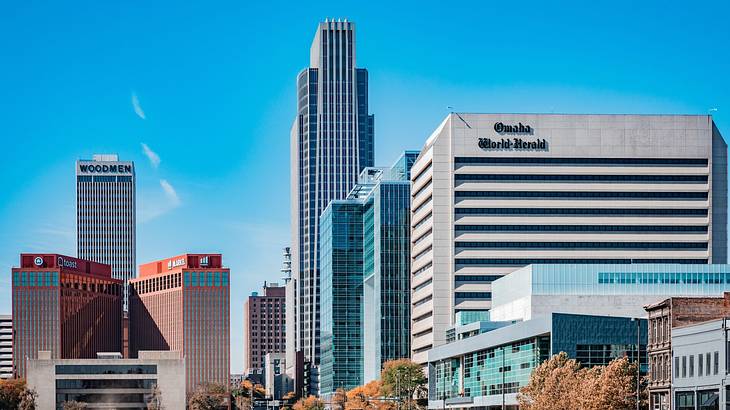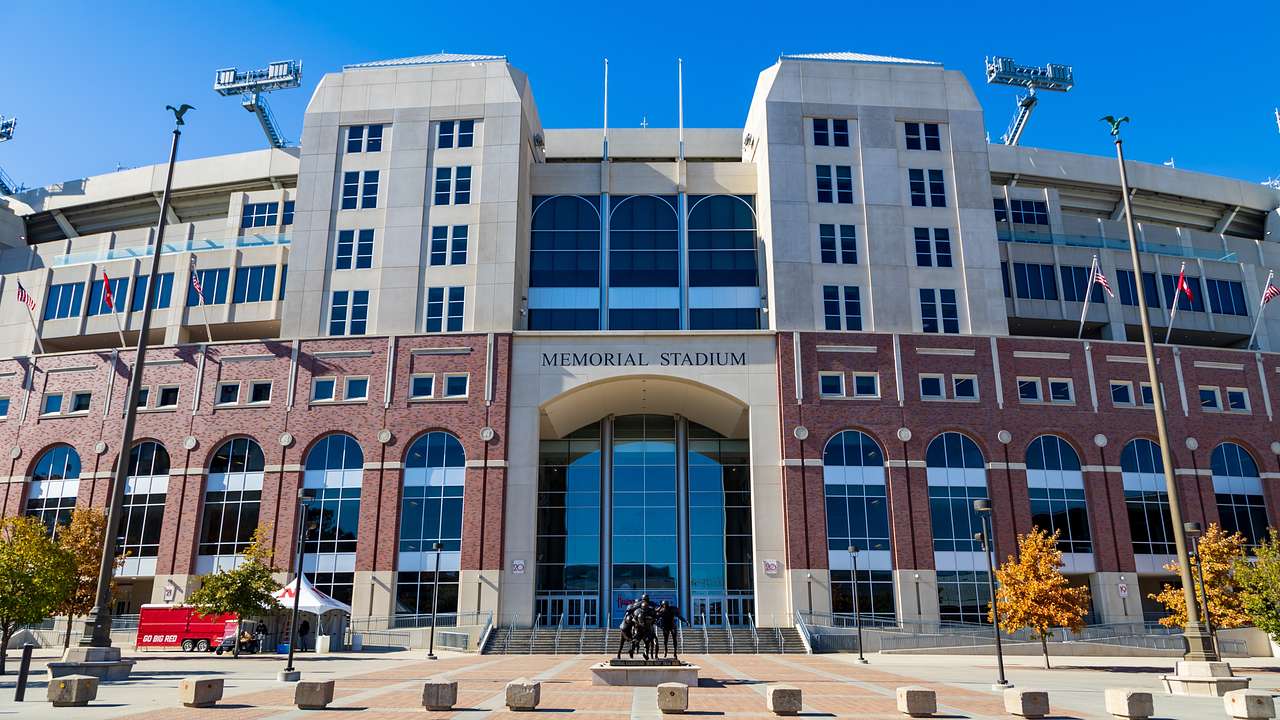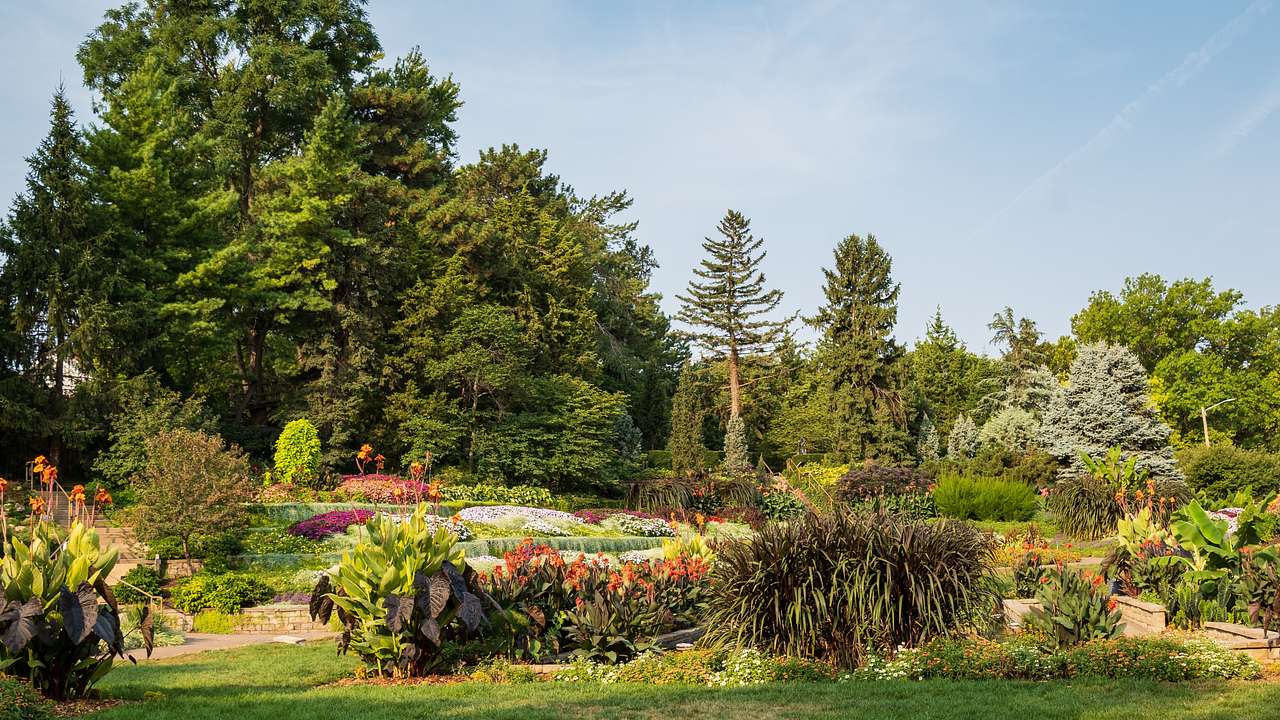6 Nicknames for Nebraska and the Stories Behind Them
Destguides may receive commissions from purchases made through affiliate links in this article.

Nebraska is found in the Great Plains region of the Midwestern United States. It's a vast, wide-open state primarily known for its agriculture industry. Corn and beef cattle are big businesses in Nebraska, so much so that popular nicknames evolved from both. That includes the official state moniker, the Cornhusker State.
You'll also find that some Nebraska slogans come from the state's fantastic natural features and wildlife. But that's unsurprising since the state has more than 20 million acres of range and pastureland.
However, that is just the tip of the iceberg regarding alternate names for the state. To find out more, keep reading for six of the most common nicknames for Nebraska and the stories behind them.
6 Nebraska Nicknames

The Cornhusker State
It's a well-known Nebraska fact that the area is nicknamed the Cornhusker State. This moniker came about because of the University of Nebraska-Lincoln.
Their athletics department has been referred to as the Cornhuskers since 1900. The name grew so popular that the Nebraska Legislature voted to make the Cornhusker State the official nickname in 1945.
Corn has long been an essential crop in Nebraska. In the years before mechanical harvesting, a cornhusker was the person who would pick and husk the ears in the field. According to the Nebraska State Historical Society, cornhuskers were so in demand during the early 1900s that they could earn as much as five dollars per day. This was an excellent wage at the time and otherwise unheard of for rural farmworkers.
Today, corn remains the most integral crop in Nebraska. More acres of farmland are dedicated to corn than to any other type of produce. Overall, Nebraska ranks third in the United States for corn production.
The Beef State
It has never been an official nickname, but Nebraska has been known as the Beef State for over seven decades. Throughout the 1950s and 60s, the slogan was proudly displayed on the state's license plates. Even today, beef production is the largest segment of Nebraska's vital agriculture industry.
Corn, the largest crop by acreage in Nebraska, makes up a big part of the state's beef cattle diet. In fact, 40% of corn production becomes feed for Nebraska livestock. But that shouldn't be surprising, considering you can find three-and-a-half times as many cattle as people in the state.
Interestingly, cities in Nebraska also have slogans based on the beef industry, like Lincoln's nickname of the Steak Capital of the World. Due to the industry's continued importance across the state, it's no wonder that the Beef State remains a frequently used Nebraska name!

The Tree Planter State
Although it's an old nickname, you'll often hear Nebraska called the Tree Planter State. It was once so popular that it was the official state nickname from 1895 until 1945.
The Tree Planter State moniker originates from some of the earliest United States settlers in Nebraska. As part of the Great Plains, you'll find plenty of wide-open grasslands across the state. These first settlers planted trees, acres at a time, to act as wind-breaks, reduce soil erosion, and provide shelter for livestock.
It's estimated that Nebraska had around one million acres of trees when the first US settlers arrived in the mid-1800s. Today, thanks to the efforts of residents of the Tree Planter State, that acreage has doubled to two million.
Additionally, the first Arbor Day was held in Nebraska. Over one million trees were planted across the state during that first celebration on April 10, 1872. Based on the popularity of the tree-planting event, John MacMurphy, then secretary of the Nebraska Territorial Pioneers Association, led a successful campaign to make the Tree Planter State the official slogan.
Black Water State
The Black Water State is not the most common Nebraska nickname, especially in the present day. However, you will still hear it from time to time. This unusual moniker originates from the dark, muddy color of many of the state's streams.
Nebraska has some of the country's best farm and cattle land. That's because of the dark, rich soil full of organic nutrients. As this soil is eroded and washes into regional waterways, it tends to turn the water dark.
But despite the water's sometimes off-setting appearance, it's brimming with marine life. Due to this, Nebraska is home to some terrific angling. You'll find plenty of fish lurking just below the surface, from bass and catfish to eels. The Black Water State is even home to four different species of trout.

Antelope State
Another of the local nicknames dating back to the 1800s is the Antelope State. It refers to the herds of wild antelopes that used to migrate through Nebraska. At one point, before European settlement in the region, it's estimated that the North American pronghorn antelope population numbered as high as 40 million!
Unfortunately, that number had dwindled by the end of the 1800s due to hunting. Estimates around 1900 put the country's total antelope population at just 13,000. Nebraska enacted laws to prohibit hunting the animals in 1907, but it took years to see a noticeable difference in the population. A 1925 study found just 187 pronghorn antelopes remaining in the Antelope State.
By 1955, the antelope population had grown to 3,500. Today, Nebraska's antelope population sits at around 10,000 animals. They're primarily spotted in the panhandle, where you'll also find some of the best landmarks in Nebraska, such as Chimney Rock National Historic Site.
There may be fewer wild sightings, but further east in the Antelope State, you'll find Antelope County, named in tribute to the animal. There's also the popular Antelope Park in Lincoln, Nebraska's capital.
Bug-Eating State
This one is probably the grossest-sounding nickname for Nebraska on the list. But during the late 1800s, it became well-known throughout the country as the Bug-Eating State. The name originates from one of the old nicknames for the University of Nebraska athletic teams: the Bugeaters. For much of the 1890s, that's how the world of collegiate football got to know the state.
The Bugeaters team name had nothing to do with the dietary preferences of the players or Nebraskans as a whole. Instead, it referred to the countless bull bats that would appear across the plains at night to feast on insects. Much like their inspiration, the Nebraska Bugeaters promised to devour their competition.
But it's easy to see why someone reading about the team from across the country could misinterpret the name. And that's precisely what historians believe happened. Reports of residents being Bugeaters gave Nebraska the semi-insulting Bug-Eating State nickname.
In Summary
Everyone knows that Nebraska is the Cornhusker State, but did you know the nickname became official in 1945? Or that the University of Nebraska-Lincoln has been using the name for their sports teams since 1900? How about that the previous nickname for their athletics program was the Bugeaters, which led to the Bug-Eating State moniker?
While some monikers are more flattering than others, they all represent the region's unique culture. Even if the locals aren't actually snacking on insects! Hopefully, you've learned a couple of new Nebraska state nicknames from this article and, more importantly, discovered the exciting stories behind them.
Want to keep exploring?
Subscribe for discounts on tickets and hotels and our latest guides.
Thank you for subscribing
We will be in touch soon with discounts on tickets and hotels and our latest guides.
Want to keep exploring?
Subscribe for discounts on tickets and hotels and our latest guides.
Thank you for subscribing
We will be in touch soon with discounts on tickets and hotels and our latest guides.





